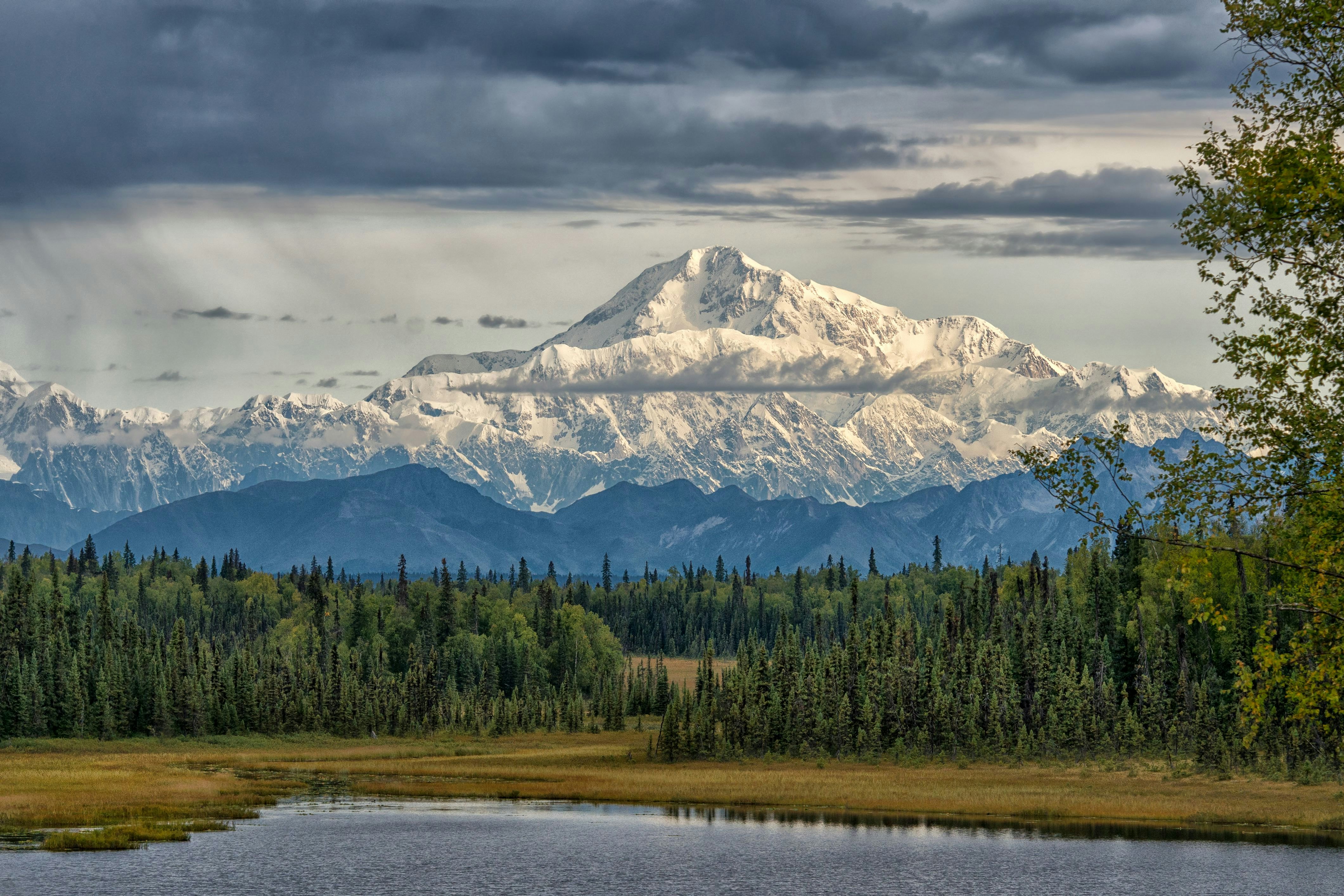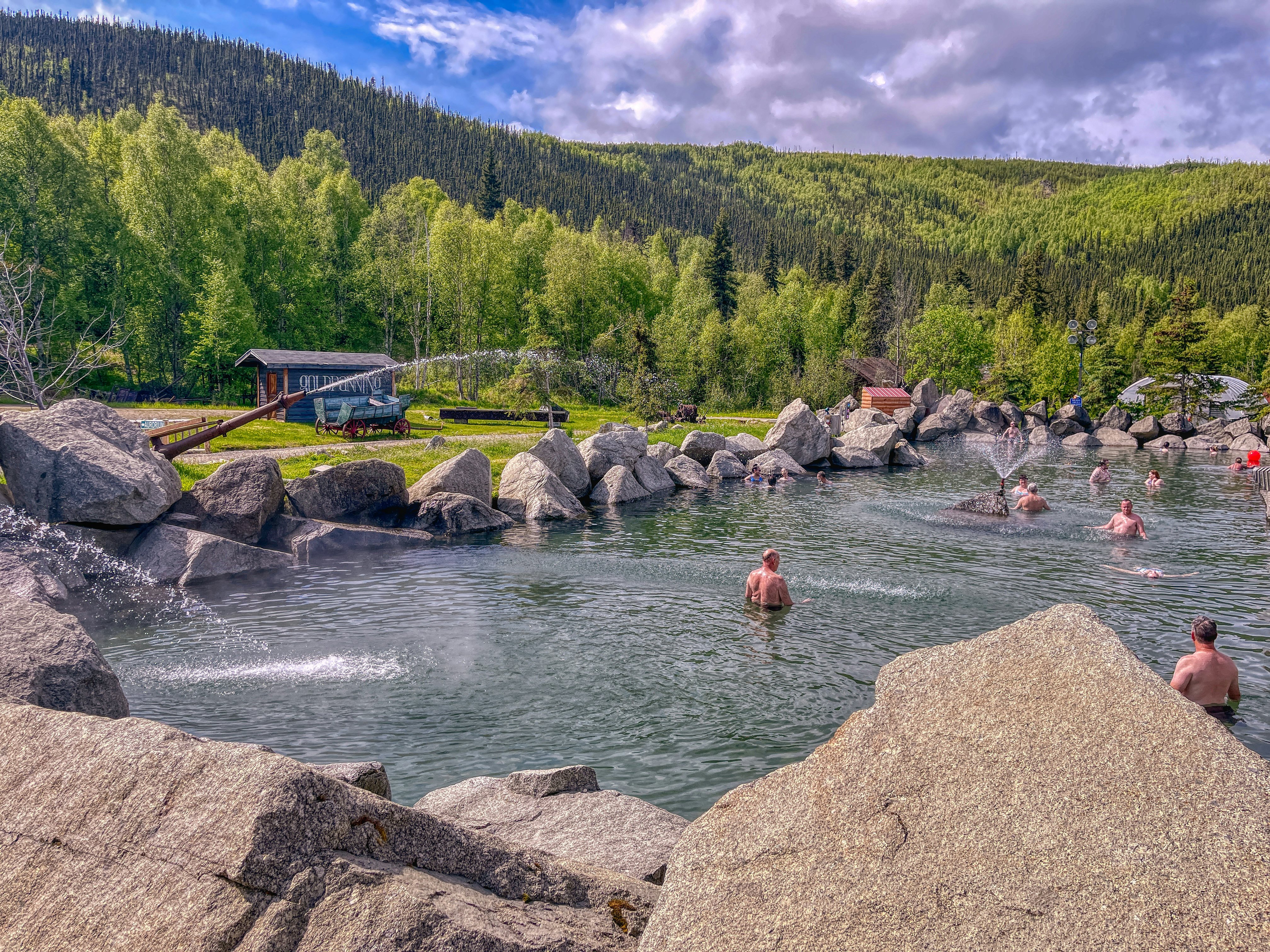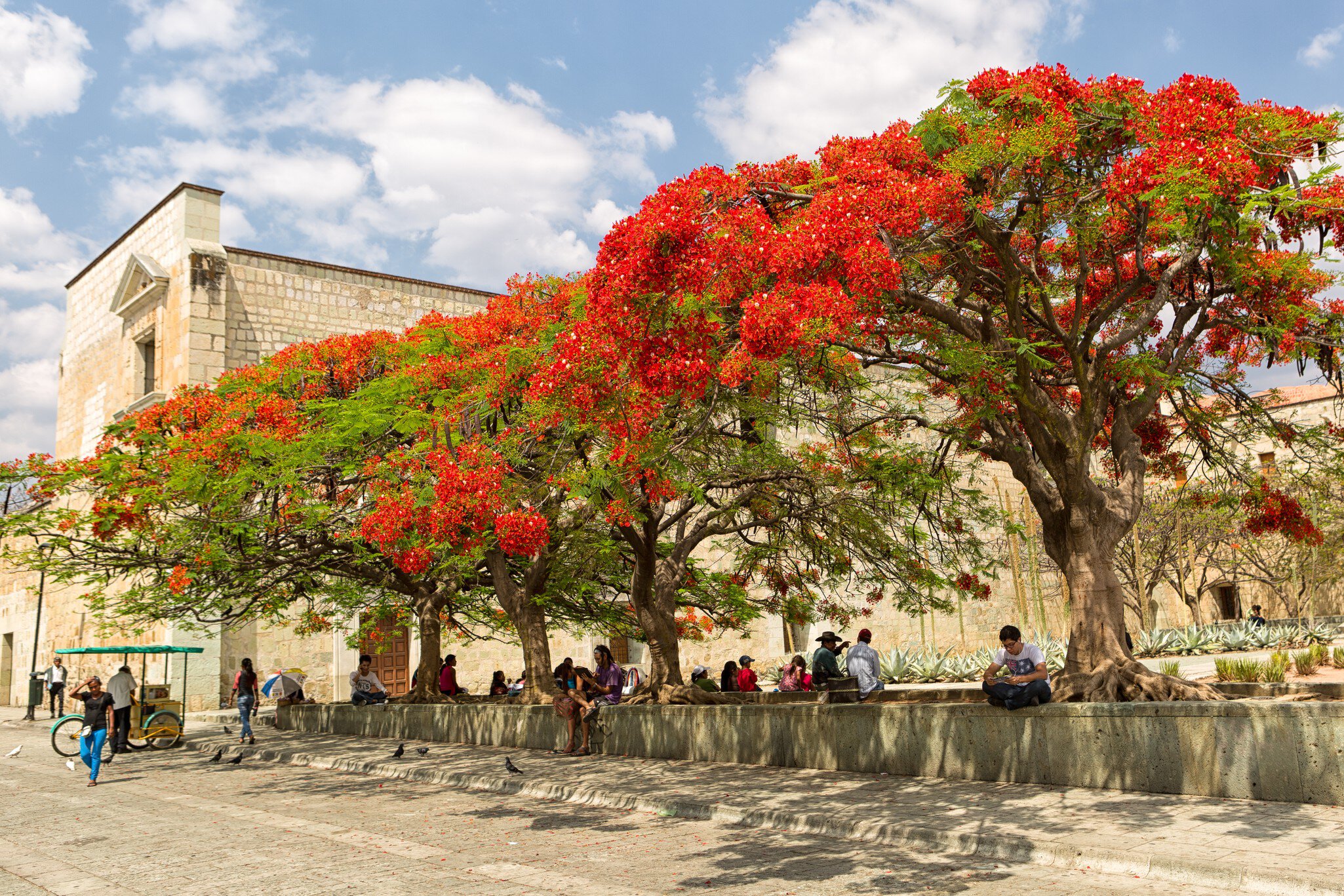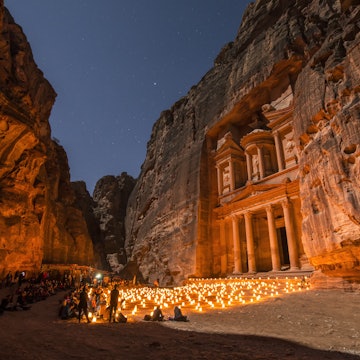

Cruising in Alaska. Darryl Brooks/Shutterstock
With vast swaths of wilderness, communities that are only accessible by boat or plane, and plenty of people whoโve chosen to live in one of the most rural and dramatic landscapes in the United States, itโs no surprise that Alaska is called the Last Frontier.
The hardest part of planning a trip to Alaska is knowing what to do and how many great places to put on your itinerary. Whether you're looking for outdoor adventures in the amazing national parks, to spot wildlife, or to admire the northern lights, you will find memorable and fascinating experiences at every turn.
These are the top things to do in Alaska.
1. Cruise Alaska's waterways
Alaska cruising is big business and one of the most popular ways to see the state. Every summer, dozens of mega-ships make their way through the waters of Alaskaโs Inside Passage, visiting communities only accessible by boat (and plane), such as Sitka, Ketchikan and Juneau, the state capital. Many people make their first trip to Alaska on a cruise because itโs an easy way to experience the state without diving into trickier travel logistics.
Excursions vary across ports, including flightseeing tours that take you over vast ice fields, fishing excursions that troll the deep waterways of the region, and cultural tours where you can learn about the vibrant communities of Alaskaโs Native people.
Planning tip: There are numerous options when picking an Alaska cruise, and your primary constraints are your travel style and budget. To minimize your environmental footprint and better support local economies, consider a small-ship cruise. Several operators, including , and , offer similar itineraries to the big ships but can venture deeper into southeastern Alaskaโs waterways and visit smaller communities that also need tourism support.

2. Enjoy the wilderness of Denali National Park
What makes Denali National Park special is both what youโll find there and what you wonโt. As one of the nationโs largest national parks, Denali is a huge space of wilderness, perhaps the largest undeveloped space youโll ever experience. It's also one of the best places to see wildlife in Alaska, and you might spot moose, grizzly bears, Dall sheep, caribou, and wolves, as well as smaller mammals and many species of birds. But the national parkโs highlight is Denali itself, the tallest mountain in North America. Covered in snow year-round, the โHigh Oneโ stands head and shoulders above the rest of the Alaska Range.
The best way to visit Denali National Park is by booking one of the official bus tours. You canโt drive private vehicles past mile marker 15 of the 92-mile dirt road. But the buses go farther into the park and help limit the environmental impact of tourism in one of the last truly wild and undeveloped places in the United States.
Planning tip: Denali National Park is generally only open during the summer season, but you can also visit in the shoulder months of May and September to try and avoid some of the crowds. At present, work is ongoing on Park Road due to a landslide, meaning buses can only go as far as . Authorities expect this to remain the case until summer 2026.

3. Spot Alaskaโs wildlife
Alaska has plenty of opportunities to see wildlife, but most visitors focus on trying to see the โBig Five:" moose, grizzly bears, caribou, Dall sheep, and gray wolves. Similar in concept to southern Africaโs Big Five, these five large mammals live throughout Alaska, and seeing all of them on a single visit is considered a lucky and successful trip.
All five animals can be seen in Denali National Park, but you can spot them in other parts of the state, too. Arctic National Wildlife Refuge, also known as the "Serengeti of the north" is home to dozens of land mammals, including grizzlies, musk ox, Dall sheep and the second-largest herd of caribou in North America. If you want to guarantee success, take a trip to the south of Anchorage. Along the way, you can look for Dall sheep on the Seward Highwayโs rocky cliffside and spot the other four animals at the rehabilitation center. Many travelers to Alaska also visit to see whales and the waterways are home to several species. Humpback whales migrate north to Alaska during the summer and always delight the people on ships in their vicinity. Itโs also common to see orcas (killer whales) and small white belugas in coastal Alaska.

4. Be mesmerized by the northern lights
If you are planning to visit Alaska in the winter, youโre likely doing so for one reason: to see the aurora borealis (northern lights). Watching the phenomenon โ caused by solar particles interacting with atoms in the atmosphere โ is mesmerizing as the light seems to dance across the dark winter sky.
As the top destination in the US for viewing the aurora borealis, there are several spots throughout Alaska where the dancing lights regularly appear. The best place to base yourself is in Fairbanks, in Alaskaโs central interior. Here youโll be right under the Auroral Oval, a part of Earthโs atmosphere where aurora can appear directly overhead. Fairbanks experiences the aurora more than 200 nights per year, but it is only visible during the dark winter months.
Planning tip: The best time to visit Alaska for peak aurora activity is around the equinoxes in September and March. Wear lots of layers (temperatures regularly drop far below freezing), and give yourself at least three nights on your itinerary to maximize your chances of clear skies and aurora activity.

5. Ride the Alaska Railroad
One aspect of Alaska that surprises many first-time visitors is how little travel infrastructure there is: the Alaska highway system has just four routes, and thereโs only one railway line in the whole state. It pays to plan ahead.
The Alaska Railroad was built in the early 20th century and was one of few federally funded railroads in the US. Today, it is operated by the state of Alaska, and it shuttles visitors between a handful of stops along the 400-mile route. Seward, Anchorage, Talkeetna, Denali and Fairbanks are the most common stops visited.
Planning tip: The best way to experience the Alaska Railroad is by tying it into other travel plans. Wherever possible, splurge for the upper-class seats that often include a glass-domed train car where you can watch the splendor of Alaska pass by unobstructed. You can take the train to and from Denali National Park or ride it down to Seward to explore Kenai Fjords National Park.

6. Explore Kenai Fjords National Park by boat
While many visitors focus on Denali National Park, thereโs another national park thatโs easy to visit โ well, easy by Alaska standards, which is to say that you can drive there. Kenai Fjords National Park covers a swath of water, mountain, and shoreline in south-central Alaska. The gateway city to visit this park is Seward, a 2.5-hour drive south of Anchorage along the Seward Highway.
The only part of Kenai Fjords National Park thatโs accessible by car is Exit Glacier near Seward. A short, easy hike educates visitors about glaciology and shows the markers that demonstrate this glacierโs rapid recession. The Kenai River Trail is also one of the best hikes in Alaska, but donโt let that be your only experience of Kenai Fjords National Park. From Seward, you can book any number of day cruises that will take you out into the waterways that comprise the majority of the park. There youโll spot sea birds, otters, sea lions, orcas, and โ if youโre lucky โ humpback whales that migrate from Hawaiสปi to this part of Alaska during the summer.
Planning tip: Cruise companies don't operate in Kenai Fjords during the winter.

7. Soak in the Chena Hot Springs
An hour outside Fairbanks, Chena Hot Springs draws visitors year-round, especially in the winter after a night out admiring the northern lights. This is one of the few developed and easily accessible hot springs in Alaska, though there are many natural and undeveloped springs that are known mainly to locals. At Chena Hot Springs, you can dip in one of two hot spring pools; the outdoor one is a real treat during the frigid winter months when condensation from the hot water will cause ice crystals to form on your hair and eyelashes.
Planning tip: also offers other experiences on its property, including tours of an Ice Museum, hiking or snowshoeing depending on the season, and late-night aurora-viewing excursions.

8 Celebrate Alaska's First Peoples
Since the first arrival of humans to Alaska via the Bering Land Bridge, connections to earth, sea and sky by the indigenous people inhabiting the Great Land have run deep. Each of the more than 200 tribal groups across Alaska has cultural traditions and subsistence practices celebrated over centuries, even as the arrival of Europeans and later, Americans, threatened their existence through enslavement, disease and race-based discrimination. It is important visitors understand the ways of Alaskaโs First People, and show respect while visiting ancestral homelands.
You can start at the Alaska Native Heritage Center in Anchorage, which is a hub for education and information about the 11 main tribal groups inhabiting Alaska for time immemorial. Gather insight into Inupiat culture at the Katirvik Cultural Center in Nome, and witness the longstanding traditions of the far-northern tribal groups. Stop by the Morris Thompson Cultural and Visitors Center in Fairbanks for Athabascan fiddle dances during the winter months. Wander the Arctic Studies exhibition in the Anchorage Museum at Rasmuson Center. Or, visit the village of Seldovia near Homer to see Native art and exhibits related to Kenai Peninsula groups.
At in Ketchikan you'll see the largest collection of totems in the world. While, on an island amid towering spruce and hemlock, Sitka National Historical Park preserves the site of a deadly 1804 skirmish between invading Russian traders and indigenous Kiks.รกdi Tlingit. The park museum contains a small but exquisite collection of indigenous artwork and crafts. Some of the finest works on display, including masks, story panels and beadwork pouches, were created by present-day indigenous makers, showing the arts are still very much alive.

9. Discover Alaska by hiking
Of all the activities available in Alaska, hiking and walking are by far the most accessible and for many, the only way to explore the state. With a plethora of parks, trails, pathways and untracked areas open to hikers of any ability or age, each of the stateโs regions offer miles of wandering. Follow the short, steep Mosquito Fork trail in Chicken for amazing views of Fortymile country and gold-mining operations. Stretch your legs in Denali National Park with a hike on Rock Creek Trail, winding through a forest of birch and spruce. Enjoy sweeping views of the Anchorage Bowl, Cook Inlet and Denali on Anchorageโs most popular hike, Flattop Mountain. Or, hike up Grace Ridge, accessed by water taxi in Kachemak Bay State Park, with stunning views from a high alpine peak. For panoramic views, ascend more than 2500ft up 5 Mt Verstovia in Sitka, and ogle the sights from the summit.
Planning tip: Go with a guide. Alaskaโs rugged landscape can be intimidating. Hiking with a naturalist guide can provide both interesting information about an area, and situational experience for those unaccustomed to wilderness adventuring.

Plan with a local












